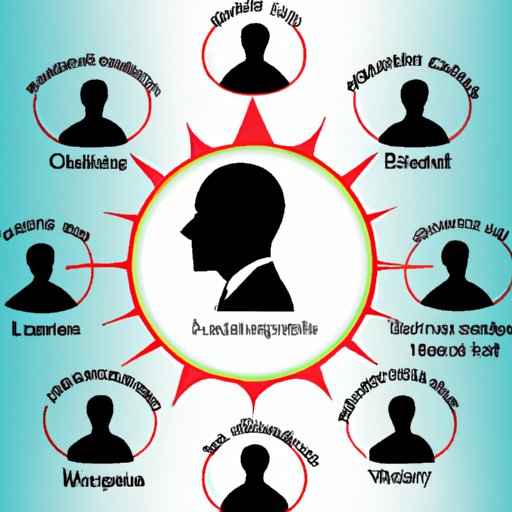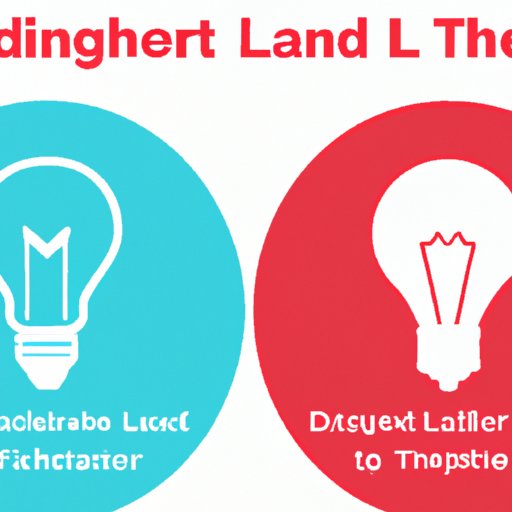Introduction
Thought leadership is an approach to business that involves demonstrating expertise and knowledge in a particular field in order to influence and inspire others. By leveraging their experience and insight, thought leaders are able to provide valuable guidance and insight on current trends and issues in their industry. As a result, they can help organizations to develop innovative solutions and stay ahead of the competition.
Thought leadership can offer a range of benefits to businesses, including increased visibility, improved communication, and changes in company culture. But becoming a successful thought leader isn’t easy. It requires dedication and commitment, as well as the ability to identify opportunities and build connections. In this article, we’ll explore the benefits of thought leadership and how to achieve it.

Role of Thought Leaders in Business
Thought leaders play an important role in business. They provide guidance and ideas that can help organizations to innovate and stay ahead of the competition. Thought leaders are also invaluable when it comes to driving change in an organization. They can help to challenge existing processes and protocols, and introduce new ideas and approaches.
Thought leaders are also valuable sources of knowledge and insight. By leveraging their expertise and experience, they can help organizations to identify opportunities and develop strategies to capitalize on them. This can be especially beneficial for small businesses and startups, who may not have access to the same resources and networks as larger companies.
Impact of Thought Leadership on an Organization
Thought leadership can have a significant impact on an organization. One of the most notable benefits is the changes in company culture that it can bring about. By encouraging employees to think differently and challenge the status quo, thought leaders can foster a culture of innovation and collaboration, which can lead to greater success.
Thought leadership can also improve communication within an organization. Thought leaders can help to facilitate conversations between different departments and teams, and ensure that everyone is on the same page. This can lead to better decision making and smoother operations.
Finally, thought leadership can increase an organization’s visibility. By sharing their expertise and insights, thought leaders can attract attention from potential customers and partners, and help to build a positive reputation for the company.

Identifying Opportunities for Thought Leadership
Successful thought leadership requires identifying opportunities and developing strategies to capitalize on them. This can involve researching trends in the industry, attending conferences and events, and engaging with influencers. It’s also important to build connections with other thought leaders and industry professionals, as this can help to expand your network and open up new opportunities.
Social media can also be a useful tool for thought leaders. Platforms like Twitter and LinkedIn allow you to share your thoughts and ideas with a wider audience, and engage with other thought leaders and industry professionals. This can help to raise your profile and increase your visibility.
Challenges of Being a Thought Leader
As with any venture, there are challenges associated with being a thought leader. One of the biggest is establishing credibility. In order to be taken seriously as a thought leader, you need to demonstrate expertise and authority in your field. This can take time and effort, but it’s essential if you want to be successful.
Another challenge is finding the time to dedicate to thought leadership. It requires a commitment of time and resources, and it’s important to prioritize it in order to make the most of the opportunities that come your way.
Finally, it’s important to overcome any fear of criticism. As a thought leader, you will be expected to take risks and challenge the status quo. This means that you may occasionally face criticism, but it’s important to learn from it and use it to improve your work.
Examples of Successful Thought Leaders
There are many successful thought leaders in the business world today. Bill Gates is one of the most prominent examples. He has built a reputation as an innovator and philanthropist, and his insights and advice are heavily sought after. Warren Buffett is another example. His investment strategies and advice have made him one of the most successful investors of all time.
Oprah Winfrey is another example of a successful thought leader. She has established herself as a trusted source of advice and inspiration, and her influence extends far beyond the entertainment industry. These examples demonstrate the power of thought leadership and its potential to shape industries and empower people.

Comparison and Contrast of Different Types of Thought Leadership
There are three main types of thought leadership: expertise-based, visionary, and cultural. Expertise-based thought leadership involves leveraging expertise and experience to provide valuable insights and advice. Visionary thought leadership involves setting a vision for the future and inspiring others to follow it. Cultural thought leadership involves creating a culture of collaboration and innovation.
Each type of thought leadership has its own advantages and disadvantages. Expertise-based thought leadership is focused on providing practical advice and insights, while visionary thought leadership is more focused on inspiring and motivating people. Cultural thought leadership is focused on creating an environment of collaboration and innovation. Ultimately, it’s up to the individual to decide which type of thought leadership is best suited to their goals.
Conclusion
Thought leadership can be a powerful tool for businesses to innovate, communicate, and become more visible. By leveraging their expertise and experience, thought leaders can provide valuable guidance and insight that can help organizations to stay ahead of the competition. There are a range of benefits to thought leadership, including changes in company culture, improved communication, and increased visibility.
But becoming a successful thought leader isn’t easy. It requires dedication and commitment, as well as the ability to identify opportunities and build connections. With the right strategies and mindset, however, anyone can become a successful thought leader. We hope this article has provided some insight into the benefits of thought leadership and how to achieve it.
(Note: Is this article not meeting your expectations? Do you have knowledge or insights to share? Unlock new opportunities and expand your reach by joining our authors team. Click Registration to join us and share your expertise with our readers.)
